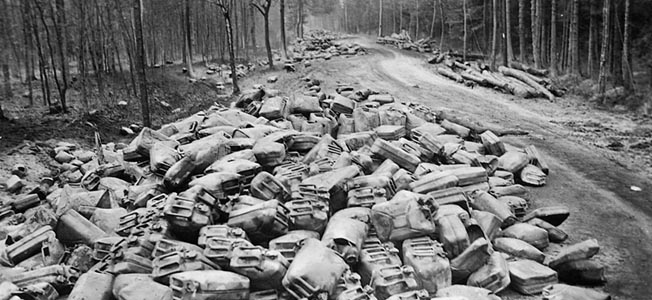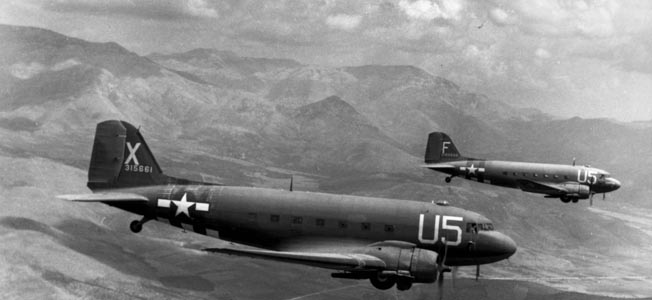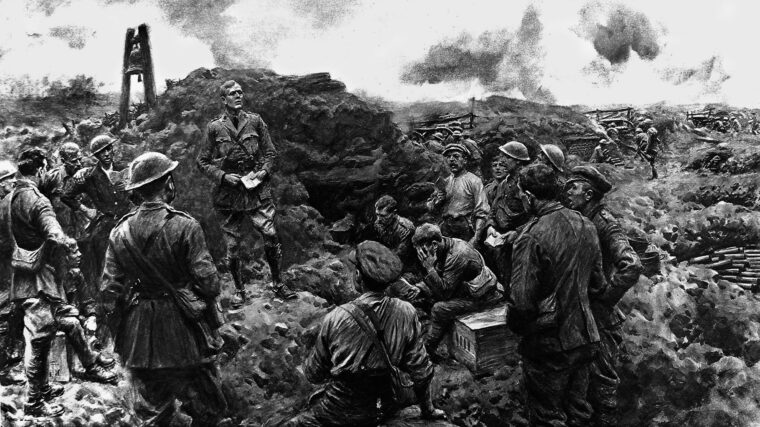
Normandy
Project Habakkuk’s Iceberg Aircraft Carrier
By Stephen D. LutzDuring World War II British and American aircraft carriers, serviced and ready for naval combat, averaged 20,000 to 30,000 tons. Read more

Normandy
During World War II British and American aircraft carriers, serviced and ready for naval combat, averaged 20,000 to 30,000 tons. Read more

Normandy
German defenders hunkered in their concrete and steel bunkers along the Normandy coast were in for two major shocks on Tuesday, June 6, 1944. Read more

Normandy
The darkness held a terror of its own—any false movement or unwarranted sound could easily betray the presence of the 16-man patrol that crept ever closer to the enemy lines. Read more

Normandy
From the Supermarine Spitfire to the North American P-51 Mustang, and from the Soviet Yak series to the Vought F4U Corsair, the Allies were able to field a formidable array of fighter planes against the Axis powers in World War II. Read more

Normandy
Lieutenant General Omar Bradley, commander of the U.S. First Army, considered his 90th Infantry Division a problem unit. Read more

Normandy
For the Allied tankers and infantrymen of the American, British, Canadian, and Free French armies battling German Panther and Tiger tanks in Normandy in the summer of 1944, the Sherman tank’s failures were glaringly evident as their own shells bounced off the hulls of the Nazi armor and they were themselves destroyed at a far greater range by the powerful German tanks. Read more

Normandy
Maybe the Turks were just bad at picking the winning side. In World War I the Central Powers were defeated by the Allies, so in October 1939 they switched to ally with Britain and France. Read more

Normandy
Stanislaw Sosabowski started his military career in the anti-Hapsburg Polish underground movement in 1907, served in the Austrian Army in World War I, and rose to the command of the Polish Parachute Brigade in World War II. Read more

Normandy
Upon visiting Oradour-sur-Glane, one finds a quiet, rural French village where the populace carries on about its business much like in any commune in France. Read more

Normandy
Eighty miles off the coast of New Jersey and 280 feet below the surface of the Atlantic Ocean lies the forward section of a World War II destroyer, where it came to rest more than 60 years ago. Read more

Normandy
Opened on June 6, 2000, on the 56th anniversary of the D-Day landings, the National D-Day Museum, as it was then known, initially focused on the amphibious invasion of Normandy. Read more

Normandy
On June 22, 1940, the British prime minister, the formidable Winston Churchill, directed that an airborne force of at least 5,000 men was to be formed. Read more

Normandy
When plans were drawn up for the Allied invasion of France in 1944, one important consideration was securing a deep-water port to allow reinforcements and supplies to be brought in directly from Great Britain and the United States. Read more

Normandy
By Michael D. Hull
August 1944 saw a rosy mood of optimism and self-deception sweep through the Allied high command in France as a result of the sudden, dramatic end to the campaign in Normandy. Read more

Normandy
At midnight, the jumpers of 2nd Battalion, 517th Parachute Regimental Combat Team, as well as the 596th Parachute Combat Engineer Company, still dripping from the paint-spray line, shuffled across Ombrone Airfield to the waiting C-47s of Serial 6 and climbed aboard. Read more

Normandy
In May 1941, General Kurt Student’s elite paratrooper forces descended like an anvil on the British garrison defending Crete. Read more

Normandy
A chill breeze cut through the early morning haze, and the storm-swollen sea was rough off the coast of northern France on Tuesday, June 6, 1944. Read more

Normandy
After four months and a 600-mile advance from the beaches of Normandy into Brittany and then through eastern France, the spearhead of Lt. Read more

Normandy
They carried no weapons, only holy books and rudimentary vestments, a crucifix or a Star of David and sometimes a little Communion kit. Read more

Normandy
As the landing craft carrying the invading Allied ground forces of Operation Overlord motored toward the Normandy beaches on June 6, 1944, they were protected and supported by the largest aerial armada the world has ever seen. Read more